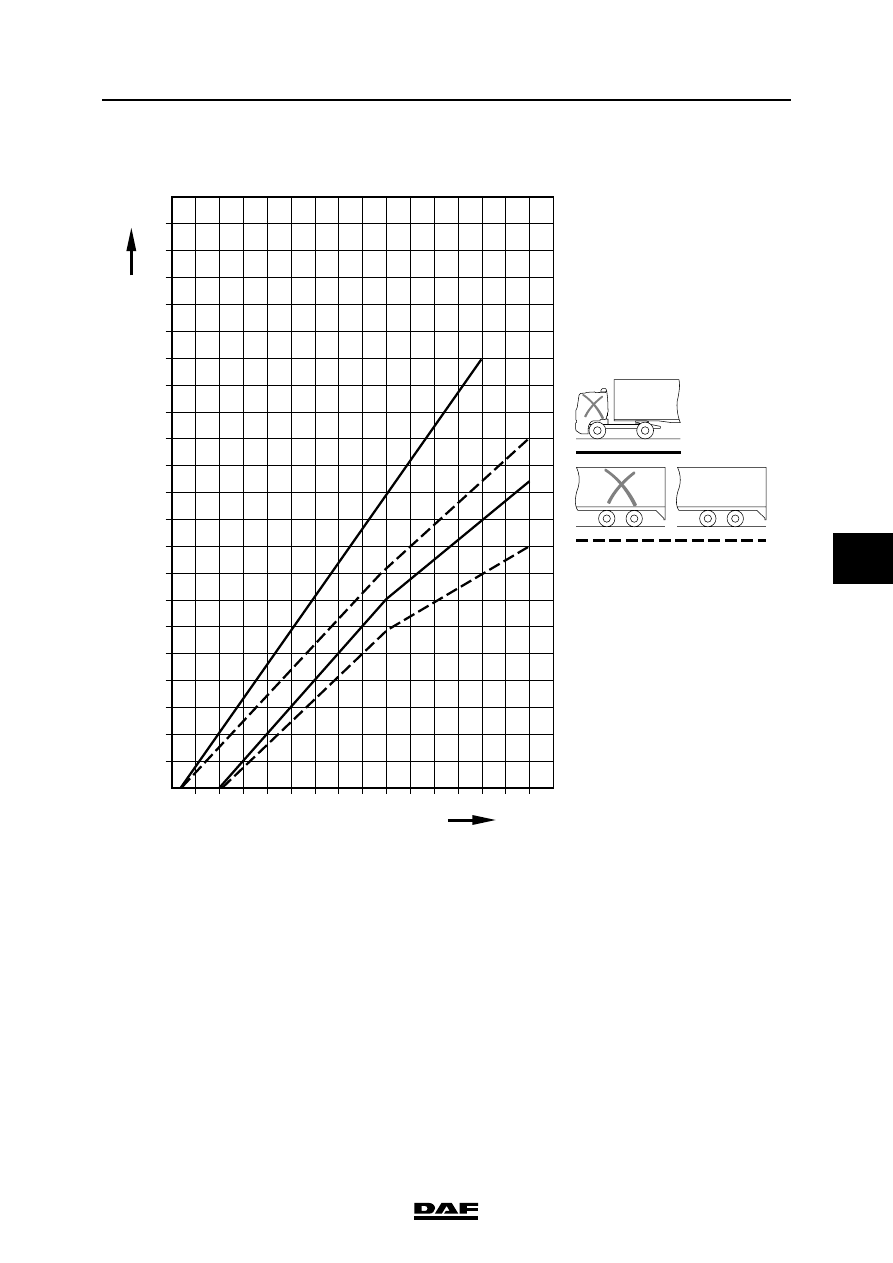DAF CF65, CF75, CF85 Series . Manual - part 933

©
200423
1-9
General
BRAKING PERFORMANCE AND BRAKE EQUALISATION
ΧΦ65/75/85 series
6
6
1.5 EC BAND FOR A LADEN TRACTOR/SEMI-TRAILER COMBINATION
The "EC band" indicates the limits within which
the deceleration value must lie.
The "EC band" applies to:
-
tractor with conventional brake system
-
semi-trailer with conventional or EBS brake
system
100
%
a
90
80
70
60
50
40
30
20
10
0
1
0
2
3
4
5
6
7
8
R600881
EBS
EBS
P (bar)
EBS